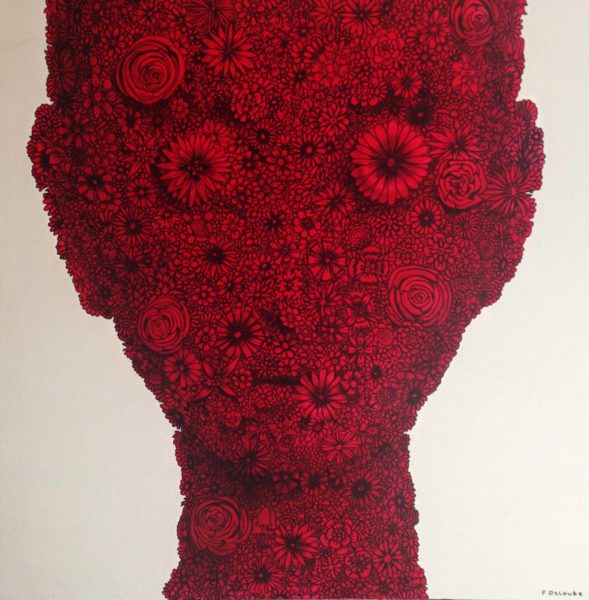Teaching a second language is more than getting your students to form pairs and chat about their hobbies. Yes, we’ve all been there. Teachers are often bound by a textbook, and that is both a security blanket and a trap. Grammar is important; repetition is necessary; practice is essential. But learning to speak in a second language is also about carving a new identity. It’s a quest – sometimes painful, sometimes joyful. It’s about stretching one’s sense of self.
To fully commit to a new language we need our students to invest their whole body. They already do. They shape their mouths to articulate sounds; they perform gestures to convey emotion; they adopt a posture in space. This happens all the time, but it is seldom addressed in the language class. Doing that consciously takes learning to a new level. In a nutshell, it’s about embodying language.
There are many ways to embody language: Total Physical Response (TRP) and Physically Active Learning are obvious examples. While these methods are useful, embodied cognition is deeper when it’s anchored in aesthetic form. When embodiment meets arts education – that’s performative language teaching.
This approach to teaching involves the integration of one or more art forms (theatre and drama; dance; music; creative writing; visual arts; digital arts) for second language teaching and learning. It can work at various levels of proficiency, from beginner to advanced – with both children and adults.
The term was coined by Prof Manfred Schewe, in a seminal article, Taking Stock and Looking Ahead published in Scenario in 2013.
The term ‘performative’ encompasses theatre, drama and other art forms – in the context of Second Language education. It refers to a kind of language teaching that values:
- aesthetic form [perFORMative]
- performance [PERFORMative]
- the concept of ‘performatives’ in Linguistics
- as well as formare, to train, teach, shape [perFORMATIVE]
For an articulated definition of these concept, see Performative in a Nutshell, published in Scenario 2020 and the Recommendations for Promoting a Performative Teaching, Learning, and Research Culture.
Scenario is a community of teacher-artists with a shared disposition for research and performative language practice.
Scenario Forum is 360 degrees project, featuring a book series, research conferences, symposia, a monthly research colloquium, as well as a peer-reviewed academic journal that publishes two issues per year.
The journal was founded by Prof. Manfred Schewe and Prof. Susanne Even in 2007. As they write in the opening of the first issue, they had the idea for a while before launching the journal. And thank god they followed through.
Until then, there was interest in the topic, but the field was fragmented under a myriads of labels and acronyms. There are still various terms employed to refer to language learning through drama (and the arts) but at least there is one solid reference point for all variations to co-exist.
To date, Scenario is the only peer-reviewed, academic journal that focuses exclusively on performative language pedagogy and research. It is a bilingual publication (German-English) published twice a year.
The Scenario correspondents are representatives from different countries that contribute to an ongoing exercise to map out differences and similarities in expressions of performative language teaching and learning around the globe.
I am honoured to have joined the Scenario editorial team this year. Check out the Call for Paper (issue 2, 2021): ‘Nothing about us without us’: Provocations for ethics in performative language teaching and research’ with guest editors Fiona Dalziel and Garret Scally.
Teachers who take a performative approach commit to their practice as teacher-artists.
The expression ‘teaching artist’ was first coined in the 1970s by educator June Dunbar at the Lincoln Center Institute in New York. In the first issue of the Teaching Artist journal, Booth (2003) interviewed a number of key practitioners to formulate a working definition of the teaching artist.
The main features emerging from the responses included: using practices of an art form but going beyond the art form to connect to other areas of life; embodying the teaching; a capacity to activate participation; and a focus on process (pp. 6–7). After more than a decade of inquiry, Booth (2015) reflects:
A TA [teaching artist] does not ‘perform’ set workshops but generatively brings her creative thinking, learning interests, and ways of thinking to bear on every opportunity with participants. We don’t teach something, we co-learn, co-create in skilfully shaped inquiries (p. 152).
This quote sums up the essence of what I do, as a reflective practioner and a teacher-artist.
Schewe differentiates between small-scale and large-scale forms in performative language pedagogy.
Small-scale forms can be integrated within the curriculum, unfolding for one, or several classes. Process drama, among others, falls under the small-scale category.
Long-scale forms are longer, product-oriented projects, aimed at the rehearsal and staging of plays, which span over months and often imply extra-curricular commitment.
What form is the best for, say, A1 learners (beginner level)? What about C2 (advanced)? These are complex questions. The answer is a hyper cube away. To find out more, I share an extract of my book, here.



